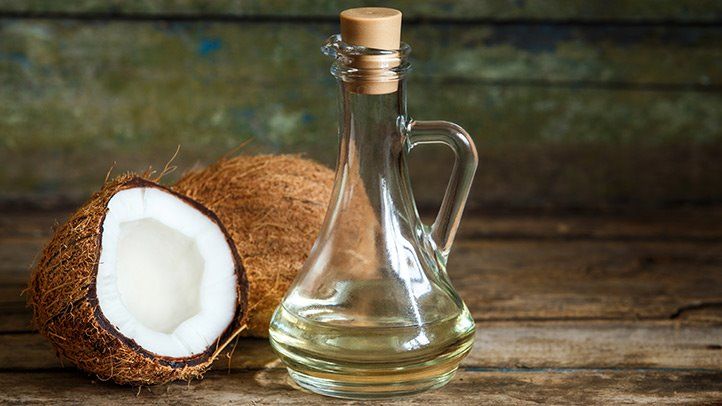Candida is a fungus that naturally lives in the body. It can be found in the mouth, intestines, and vagina. Candida overgrowth, also known as thrush, is a medical condition known to occur in people who have compromised immune systems, babies, or those taking steroids or antibiotics. Thrush is characterized by white, cottage-cheese appearing lesions.
When candida over grows in the colon (large intestine) and small intestine, GI distress and discomfort starts to be noticed. A stool sample can detect overgrowth in the large intestine while a fluid sample is used for overgrowth in the small intestine (SIFO = small intestinal fungal overgrowth).
Are you more at risk for candida overgrowth?
Antibiotics and immunosuppressive treatments impact the integrity and effectiveness of the gut and immune system at large. People taking these types of medications CAN be at higher risk for all GI dysbiosis (including Candida/fungal overgrowth).
Additionally, studies have shown that people taking a class of medications called proton pump inhibitors (PPIs) or who have gut dysmotility (when muscles of the digestive tract are not moving correctly) are at higher risk for developing candida overgrowth. This is largely connected to the fact that PPIs suppress stomach acid which removes a natural barrier that is present to help kill off excess yeast that comes into the digestive tract.
(This study also found higher candida counts in people with celiac disease.)
What are the symptoms of candida overgrowth in the gut?
Stomach Pain
Signs of irregular digestion including diarrhea and constipation
Bloating
Gas
Nausea
White coating on the tongue
You may be thinking…”these are the same symptoms that EVERY GI DISORDER warns of!”. You would be pretty much correct. Candida overgrowth is often found in combination with other GI dysbiosis, leaky gut, food sensitivities, mold exposures, and inflammation.
How is candida treated?
Most treatments involve an anti-fungal medication. However, while these can kill off the fungal overgrowth, they do not address the root cause/causes that allowed the candida to become overgrown in the first place. Just ask anyone who suffers from recurrent yeast infections! This is a HUGE piece of the puzzle to consider and take action on (keep reading…)
What about a Candida Diet?
Yeast (Candida) feeds on sugar. The idea behind the Candida Diet is that eliminating sugar will help eradicate fungal overgrowth by “starving out the yeast”.
There are many versions of this diet but generally, the candida diet calls for eliminating sugars, refined grains, yeast containing foods, potential mold-containing foods (including nuts and some cheeses) and alcohol. Some Candida diets teach eliminating all forms of carbohydrates, including rice, starchy vegetables, and beans.
The controversy about these diets is that we don’t have sufficient research to show that these diets are truly effective in “starving off” candida overgrowth. Because of this, some practitioners choose not to use a Candida diet, but instead simply treat it (either with anti-fungal herbs or with a prescription). Furthermore, some will choose to do a combination of these methods (see my recommendation below).
So why do some people have symptom relief from the candida diet?
The candida diet encourages adherents to reduce consumption of refined sugars and grain products, alcohol, and pre-packaged foods. This general recommendation is something that is always recommended for general appropriate eating. Is it also helping to starve off yeast? Maybe! We just don’t quite have enough research to show us definitely. Either way, while you are working on treating Candida – making changes that are going to be ANTI-INFLAMMATORY to the body are KEY! Therefore – a decrease in sugars and refined carbohydrates are going to be in your toolkit.
My recommendation:
Avoid:
added sugars (including maple syrup, honey, cane sugar, agave, brown sugar, sugar in the raw, etc…)
mushrooms
yeast (bakers, brewers, nutritional)
Kombucha, beer, wine, vinegar (fermented/aged beverages)
Any foods that you already know make you feel unwell – A food journal can be helpful to identify which foods are triggering since symptoms may take up to two days to manifest.
Use this tool – Conquer Your Gut Health – to help you determine some potential food sensitivities
Treat:
Under the care of a trusted health care practitioner, implement either a prescription anti-fungal or a combination of herbal anti-fungals.
Caprylic Acid, Grapefruit Seed Extract, Pau D’arco, and Biocidin are commonly used by Integrative Dietitians and traditional practitioners alike as there is research that shows their effectiveness in killing fungal overgrowth.
Prevent:
Working with a trusted healthcare provider, dive DEEP to discover the root causes that allowed an environment for Candida to overgrow in general. You may use the Integrative and Functional Nutrition Academy’s idea of S.T.A.I.N. to consider potential root causes:
S – stress
T – toxins
A – adverse food reactions
I – infections
N – nutritional concerns/deficiencies
You can also look over this previous Blog Post on Maintaining Gut Health to make sure you have your final step lined up for yourself!
This pilot study showed that patients who followed a dietary intervention combined with an antifungal treatment had better outcomes at 3 months compared to the group who took the antifungal only. While a dietary intervention may be helpful, it is also important to note that a restrictive diet should only be followed for a short period of time. Ideally, the goal is to reintroduce foods while addressing the underlying reasons for the candida overgrowth.
So what DO I eat!?
- Leafy greens and vegetables – Check out Strata Nutrition’s Guide to Greens for SO MANY SCRUMMY RECIPES!
- Fruits
- Healthy fats (avocados, olive oil, flaxseed oil)
- Beans, legumes
- Meat, poultry, fish
- Eggs
- Herbs and spices for flavoring
- Ginger and lemon to aid digestion
- Coconut oil – naturally contains Caprylic Acid which has anti fungal properties!
Bottom Line:
- Find a trusted healthcare practitioner to help you get tested for intestinal fungal overgrowth
- Work with that practitioner to help you with diet and treatment options that are appropriate for your unique situation
- FIX THE UNDERLYING ROOT CAUSES that allowed your body to be a host to candida overgrowth
Thank you to my fantastic Intern Maija Erickson for her work and research on this Blog Post!!! Keep an eye for her RD world! Maija is a recent nutrition and dietetics graduate from Boston, Mass. She works as a personal trainer and has helped her clients to improve their running, skiing, and golfing performance through a functional approach to training and better nutrition habits.

Always cheering for your health,
Kylie & Maija

